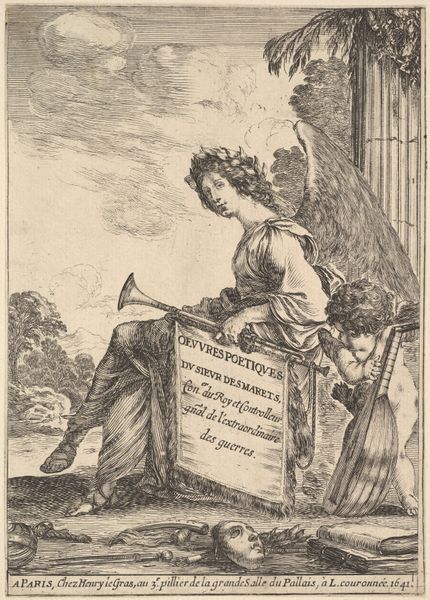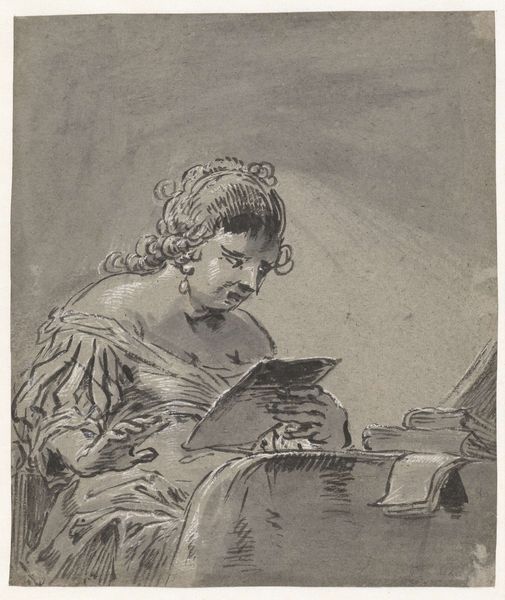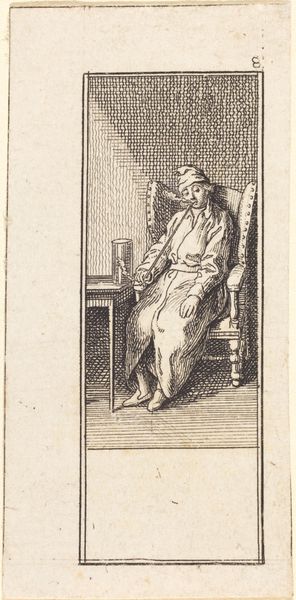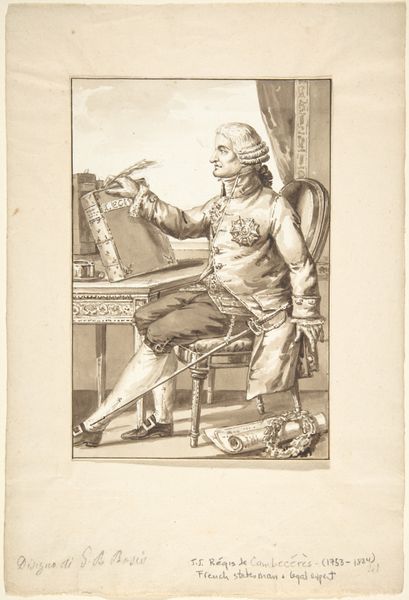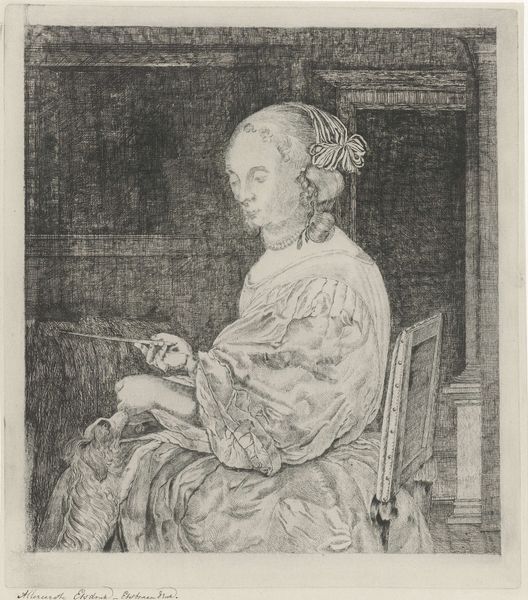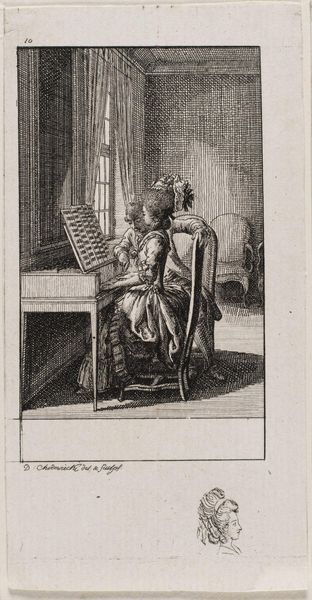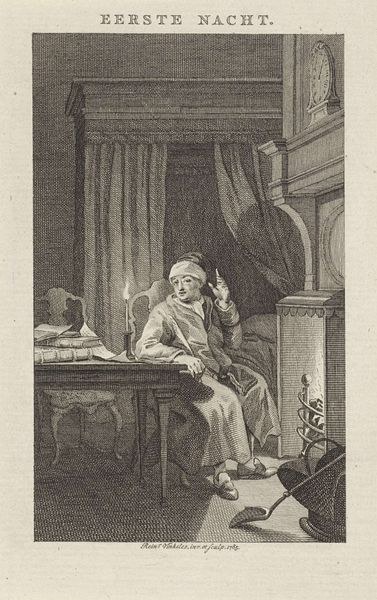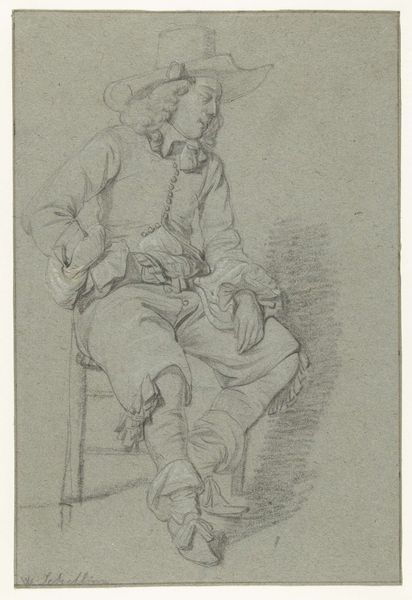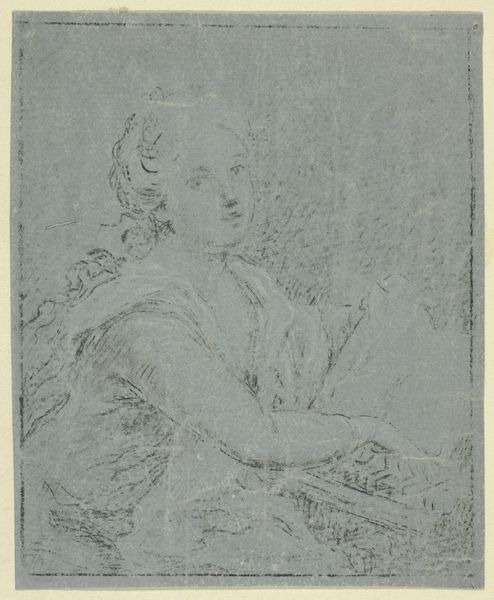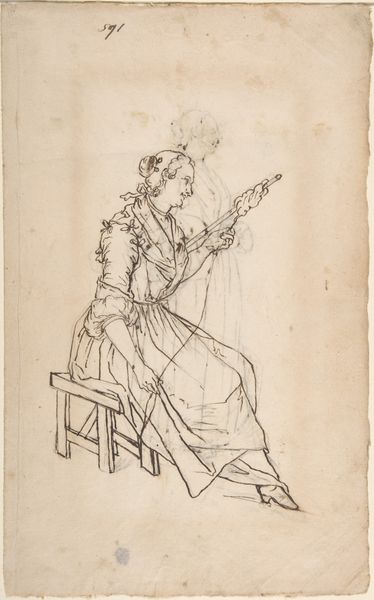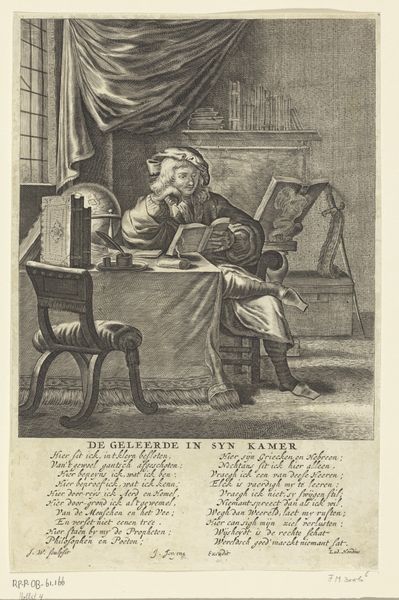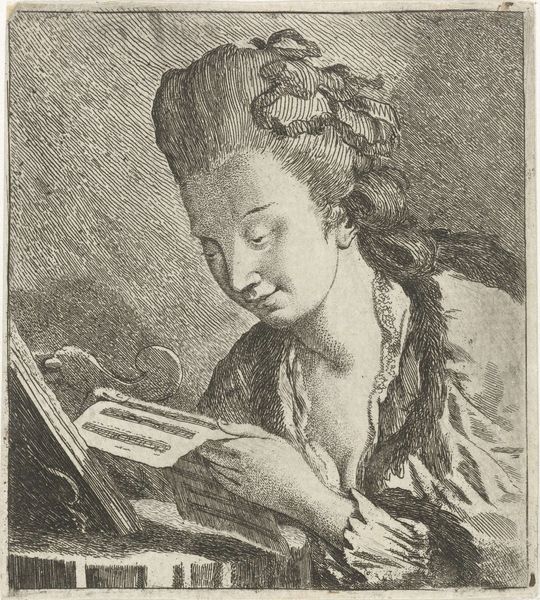
Dimensions: plate: 10.5 × 9.6 cm (4 1/8 × 3 3/4 in.) sheet: 28 × 20.5 cm (11 × 8 1/16 in.)
Copyright: National Gallery of Art: CC0 1.0
Editor: Giovanni David's "A Seated Young Woman Holding a Letter," created around 1775, presents us with an intimate scene rendered through etching. The delicate lines suggest a moment of contemplation. What strikes me most is the contrast between the sitter's ornate dress and the simplicity of the etching technique. How do you interpret this piece through its materiality? Curator: Well, consider the social context in which this etching was produced. Etchings like these democratized art. Instead of a unique painting for the wealthy, we have a print – multiple copies that could circulate among a wider audience. This opens questions about labor; artisans replicating images, serving burgeoning consumer demand. Do you think the technique contributes to a particular understanding of femininity here? Editor: That’s interesting, the point about circulation hadn’t occurred to me. The very nature of a print does seem at odds with the singular image of female beauty that's so often presented. So the availability and replicability shifts our attention from the woman herself to, what...the making? Curator: Exactly. Consider the materials. The paper, the ink, the etching tools. Each played a role in shaping this image, circulating ideas about gender and class. Note how line dictates detail but doesn't quite render a luxurious, painterly depth, almost like an aspiration. What do you notice about the production of dress within this picture? Editor: The dress indeed. Although etched, it’s still quite detailed, particularly the ruffles and lace. So the labor and resources needed to produce even the *appearance* of this level of dress points to ideas of conspicuous consumption... Curator: Precisely. And how David utilizes printmaking to question conventional portraiture and reflect back contemporary ideals. What a change, looking at consumption rather than likeness! Editor: I see how shifting the focus to the materials and the labor changes my entire reading of the work. I am really interested in finding more information on David's working practice! Curator: Indeed, thinking through the means of production gives us access to social and economic landscapes embedded in the art object.
Comments
No comments
Be the first to comment and join the conversation on the ultimate creative platform.

